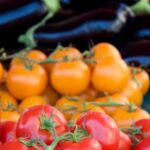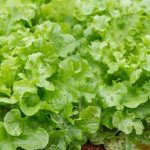Having a well-thought-out layout is crucial for successful vegetable and fruit gardening. A carefully planned layout can maximize space, improve yield, and promote healthy plant growth. By considering factors such as soil and sunlight requirements, companion planting techniques, and accessibility for maintenance, gardeners can design their gardens to optimize productivity and aesthetics.
When designing your vegetable and fruit garden layout, it’s important to consider the specific needs of different plants. Some vegetables and fruits thrive in full sun, while others prefer partial shade. Understanding the sunlight requirements of your plants will help you position them accordingly in your garden layout to ensure they receive the optimal amount of sunlight throughout the day. Similarly, companion planting techniques can be utilized to control pests naturally, enhance growth, and improve overall plant health.
Accessibility and ease of maintenance are also crucial aspects to consider when planning your garden layout. Designing clear pathways for watering, weeding, and harvesting will make these tasks more efficient. Additionally, creating raised beds or utilizing containers can minimize bending or kneeling during gardening activities. These considerations will not only make your gardening experience more enjoyable but will also encourage regular maintenance for healthier plant growth.
By giving careful thought to these factors and following a step-by-step guide for designing your vegetable and fruit garden layout, you can create a space that maximizes productivity and visual appeal. Whether you choose a traditional row layout or opt for square foot gardening, circular layouts, or vertical gardening methods, each style has its own advantages in terms of space optimization and aesthetics.
In the following sections of this article, we will explore different types of layouts in detail along with tips for optimizing space.
Overall, planning a well-designed vegetable and fruit garden layout is an essential first step towards achieving a bountiful harvest while creating an attractive outdoor space. With careful consideration of plant requirements as well as practicality and aesthetics in mind, you can transform your backyard into a productive oasis that provides fresh produce for your table and a feast for your eyes.
So let’s dive into the exciting world of garden planning and discover how to make our vegetable and fruit gardens thrive.
Factors to Consider When Designing Your Vegetable and Fruit Garden Layout
When designing a vegetable and fruit garden layout, there are several important factors that should be taken into consideration. These factors will not only ensure the success of your garden but also promote healthy plant growth and maximize yields. Here are some key factors to consider when designing your vegetable and fruit garden layout:
- Soil and sunlight requirements: Different vegetables and fruits have varying soil and sunlight requirements. Some may prefer loamy soil, while others thrive in sandy or clayey soil. Similarly, some plants require full sun exposure, while others prefer partial shade. It is crucial to consider these requirements when choosing the location for each plant in your garden.
- Companion planting techniques: Companion planting involves growing certain plants together for mutual benefit, such as pest control or enhancing growth. For example, planting marigolds alongside tomatoes can deter pests like aphids and nematodes. Research companion planting techniques to find suitable plant combinations for your garden.
- Accessibility and ease of maintenance: When designing your vegetable and fruit garden layout, think about accessibility for watering, weeding, and harvesting purposes. It is important to make it convenient to reach every part of the garden easily without damaging the plants or unnecessarily stepping on the soil.
To ensure a well-planned vegetable and fruit garden layout, make sure you consider these factors mentioned above. By understanding the soil and sunlight requirements of different plants, utilizing companion planting techniques effectively, and considering accessibility for maintenance purposes, you can create an environment where your plants will thrive.
Step-by-Step Guide to Designing Your Vegetable and Fruit Garden Layout
Designing a vegetable and fruit garden layout requires careful planning and consideration. By following a step-by-step guide, gardeners can create an efficient and successful layout that maximizes space and promotes healthy plant growth.
Step 1: Assess Available Space and Measure Dimensions
The first step in designing your garden layout is to assess the available space and measure the dimensions. Consider the size and shape of your outdoor area, whether it is a small backyard or a larger plot of land. Take accurate measurements of the area to determine how much space you have to work with.
Step 2: Analyze Soil Conditions and Make Necessary Amendments
Next, analyze the soil conditions in your garden area. Different vegetables and fruits have varying soil requirements, so it is important to understand the composition of your soil and make any necessary amendments. Test the pH level of your soil and adjust it if needed by adding organic matter or using specific fertilizers to optimize plant growth.
Step 3: Identify Microclimates and Select Suitable Varieties Accordingly
Identifying microclimates within your garden area is essential for successful plant growth. Some areas may receive more sunlight, while others may be shaded throughout the day. Observe these variations in sun exposure, wind patterns, and moisture levels to select suitable varieties of vegetables and fruits that thrive in different conditions.
Step 4: Decide on the Garden Layout Style
After assessing the space, analyzing soil conditions, and identifying microclimates, it’s time to decide on the style of your vegetable and fruit garden layout. There are various options to choose from, including traditional rows, raised beds, container gardening, or even a combination of styles. Consider factors such as accessibility for maintenance tasks like watering, weeding, and harvesting when deciding on your preferred layout style.
By following these steps in designing your vegetable and fruit garden layout, you can create a well-organized and productive space for your plants to thrive. Remember to consider the specific needs of different vegetables and fruits, utilize space efficiently, and incorporate your own design preferences. With careful planning and attention to detail, you can enjoy the benefits of a beautiful and bountiful garden.
Types of Vegetable and Fruit Garden Layouts
When designing a vegetable and fruit garden layout, there are several options to consider. Each layout has its own advantages and considerations, so it’s important to choose one that suits your needs and preferences. Here are some popular types of vegetable and fruit garden layouts to consider:
- Traditional Row Layout: The traditional row layout is a classic choice for vegetable gardens. As the name suggests, plants are arranged in straight rows with pathways in between. This layout works well for larger gardens with ample space. It allows for easy access to plants, making watering, weeding, and harvesting more convenient. However, this layout may require more space compared to other layouts, as pathways can take up valuable planting areas.
- Square Foot Gardening: Square foot gardening is a compact and efficient method of growing vegetables in small spaces. The garden is divided into square sections or grids, typically measuring one foot by one foot. Each square is then planted with a specific number of plants based on its size (e.g., one tomato plant per square).
This layout maximizes space utilization and makes it easier to organize and maintain the garden. Square foot gardening also minimizes soil compaction as you don’t need to walk on the planting areas. - Circular Layout: Circular gardens add an element of visual interest and can be particularly suitable for smaller spaces or raised beds. The circular shape creates a focal point in the garden and maximizes sun exposure on all sides of the bed throughout the day by following the path of the sun’s movement across the sky.
When designing a circular layout, consider placing taller plants in the center and shorter plants around the edges for better sunlight distribution. Pathways can be designed radiating outwards from the center or winding around the circular bed. - Vertical Gardening: If you have limited horizontal space or want to make use of vertical spaces like walls or fences, vertical gardening may be a great option for you. Vertical gardening utilizes trellises, stakes, or other support structures to allow plants to grow vertically. Vining vegetables like tomatoes, cucumbers, and beans thrive in this layout as they can climb up the supports.
Vertical gardening saves space, provides better airflow around plants, and makes harvesting easier. It can also add an interesting visual element to your garden.
When selecting a vegetable and fruit garden layout, it’s important to consider factors such as available space, sunlight exposure, and personal preferences. Each layout has its own advantages and challenges, so choose the one that fits your needs and goals for your garden. Remember that with proper planning and care, any type of layout can result in a beautiful and productive vegetable and fruit garden.
Tips for Optimizing Space in Your Vegetable and Fruit Garden Layout
When designing your vegetable and fruit garden layout, it is important to consider how to optimize the available space. By utilizing various techniques and strategies, you can make the most of your garden area and maximize your yield. Here are some tips for optimizing space in your garden layout:
- Utilizing intercropping and succession planting techniques: Intercropping involves growing two or more crops together in the same space, while succession planting refers to planting different crops in the same space at different times. Both techniques help increase productivity by maximizing the use of space throughout the growing season.
- Incorporating vertical growing structures: To save horizontal space, consider using trellises, stakes, or hanging baskets to support plants that grow vertically, such as tomatoes, cucumbers, or beans. This allows you to take advantage of unused vertical space while preventing overcrowding.
- Making the most of corners and edges: Often overlooked areas like corners and edges can be utilized effectively by planting trailing or climbing crops such as strawberries or pole beans. These plants will spread out along fences or trellises, making use of vertical and otherwise unusable spaces.
| Tip | Description |
|---|---|
| Utilizing Intercropping | Growing multiple crops together in the same space to maximize productivity. |
| Incorporating Vertical Growing Structures | Using trellises, stakes, or hanging baskets to support plants that grow vertically. |
| Making the Most of Corners and Edges | Planting trailing or climbing crops in overlooked areas like corners and edges. |
By following these tips, you can optimize the space in your vegetable and fruit garden layout, allowing you to grow a wide variety of crops even in limited areas. Remember to plan ahead and consider the growth habits of different plants when implementing these strategies. With careful planning and efficient use of space, you can create a bountiful and productive garden.
Designing a Functional and Aesthetically Pleasing Vegetable and Fruit Garden Layout
Creating a well-planned vegetable and fruit garden layout not only ensures productivity but also adds beauty and visual appeal to your outdoor space. Consider these tips to design a functional and aesthetically pleasing layout for your garden:
- Creating visually appealing focal points: Incorporate focal points in your garden layout to draw attention and create interest. This could be an ornamental fruit tree, a trellis covered in flowering vines, or a decorative container filled with colorful flowers. These elements add charm and character to your garden.
- Using design elements like color and texture: Plan your vegetable and fruit garden layout by considering the visual appeal of different plants. Choose a variety of vegetables that offer vibrant colors, such as red tomatoes, yellow peppers, or purple eggplants. Also, consider the textures of the plants – combine leafy greens with trailing herbs or tall-stemmed vegetables for an interesting mix.
- Incorporating ornamental fruit trees, shrubs, or flowers: To enhance the aesthetics of your garden, consider incorporating ornamental fruit trees or flowering shrubs into your layout. Not only will they provide shade but also add beauty through their blossoms or fruits. For example, apple trees offer beautiful spring blossoms, while blueberry bushes provide vibrant foliage in autumn.
- Utilizing edging, pathways, and decorative containers: Edging your garden beds with bricks or stones not only enhances the overall look but also helps define boundaries between different plantings. Well-designed pathways allow easy access to all areas of the garden while adding structure to the layout. Additionally, decorative containers can be placed strategically throughout the garden to provide pops of color and create visual interest.
By incorporating these design principles into your vegetable and fruit garden layout, you can transform it into a functional and visually appealing space that you’ll love spending time in. Remember to experiment, keep personal preferences in mind, and regularly maintain and care for your garden to enjoy the rewards of your labor.
Maintenance and Care in Vegetable and Fruit Gardens
Effective watering techniques and irrigation systems
In order to maintain healthy and thriving vegetable and fruit gardens, proper watering techniques and irrigation systems are essential. One of the key considerations is to water plants consistently, ensuring that they receive an adequate amount of water without being overwatered or underwatered.
It is important to monitor the moisture levels in the soil regularly and adjust the watering schedule accordingly. A general rule of thumb is to provide about 1 inch of water per week for most fruits and vegetables, although specific requirements may vary.
There are several methods for delivering water to plants effectively. Traditional methods like hand-watering with a hose or using a watering can are suitable for smaller gardens. Drip irrigation systems are advantageous as they deliver water directly to the roots, minimizing wastage and reducing the risk of fungal diseases caused by wet leaves. Another option is installing sprinkler systems, which can be automated for convenience but require careful calibration to avoid overspray and ensure uniform coverage.
Proper fertilization and nutrient management
To support optimal growth and productivity, vegetable and fruit plants require an adequate supply of nutrients. Soil testing is an important first step in determining the nutritional needs of your garden as it helps identify deficiencies or excesses in essential elements such as nitrogen, phosphorus, potassium, calcium, magnesium, and micronutrients.
Based on the results of soil tests, organic matter or amendments such as compost, well-rotted manure, bone meal, or blood meal can be added to improve soil fertility. Additionally, organic fertilizers specifically formulated for vegetable and fruit gardens can provide a balanced nutrient supply. It is crucial to follow package instructions when applying fertilizer to avoid nutrient burn or environmental contamination.
Pest and disease control strategies
Pests and diseases pose significant threats to vegetable and fruit gardens if not properly managed. Implementing pest control strategies such as integrated pest management (IPM) can help reduce the reliance on chemical pesticides and protect beneficial insects.
IPM involves monitoring plant health regularly to identify any signs of pests or diseases. If detected, appropriate actions can be taken, such as removing affected plants or using organic pest control methods like introducing beneficial insects, employing physical barriers, or using companion planting techniques.
Prevention is key in disease control as well. Practices like crop rotation, proper spacing between plants for good airflow, and removing diseased plant material can help minimize the risk of diseases spreading.
By following these maintenance and care practices in vegetable and fruit gardens, gardeners can ensure healthy growth, prevent common issues, and enjoy a bountiful harvest.
Harvesting and Enjoying the Fruits (and Vegetables!) of Your Labor
After months of careful planning, planting, and nurturing, it’s finally time to reap the rewards of your vegetable and fruit garden. Harvesting is a pivotal moment in the gardening process, as it signifies the culmination of your hard work and allows you to savor the flavors of homegrown produce.
In this section, we will explore timing and techniques for harvesting different vegetables and fruits, discuss storing and preserving methods, and emphasize the joy of sharing your bounty with friends and family.
Knowing when to harvest is crucial to ensure optimal taste and nutrition in your produce. Each vegetable and fruit has its own indicators that signal it is ready for picking. For example, tomatoes are best harvested when they have developed their full color and yield slightly to gentle pressure.
Leafy greens such as lettuce can be harvested by simply cutting off outer leaves, allowing inner ones to continue growing. On the other hand, fruits like apples should be picked when they reach their full color but are still firm. By doing some research on each specific crop you are growing, you can determine the ideal time for picking.
Once you have harvested your fruits and vegetables, it’s important to handle them with care to maintain their quality. Proper storage techniques can help prolong the freshness of your produce. Some crops benefit from cool storage conditions such as a root cellar or refrigerator, while others may require room temperature or humidity-controlled environments.
Additionally, certain fruits and vegetables lend themselves well to preservation methods like canning or freezing. By properly storing or preserving your harvests, you can enjoy them for months beyond their peak season.
Sharing the abundance from your garden brings immense satisfaction not only for yourself but also for those around you. Whether it’s giving away excess produce to friends or hosting a celebratory meal featuring ingredients from your garden, sharing creates a sense of community and spreads joy. You can also consider donating extra produce to local food banks or participating in community garden programs.
Sharing the fruits (and vegetables.) of your labor is not only rewarding but also contributes to a more sustainable and connected world.
The process of harvesting, storing, and sharing your homegrown vegetables and fruits is the final step in a well-designed vegetable and fruit garden. It allows you to fully embrace the rewards of your labor and experience the true joys of gardening. So, go ahead and savor the flavors, explore creative recipes with your harvests, and let the fruits (and vegetables.) of your labor bring delight to you and those around you.
Conclusion
In conclusion, a well-designed vegetable and fruit garden layout can bring numerous rewards to both novice and experienced gardeners. By taking the time to plan and design your garden layout, you are setting yourself up for success in terms of maximizing space, improving yield, and promoting healthy plant growth.
Not only does a well-planned layout ensure that each plant receives the appropriate soil and sunlight requirements, but it also allows for companion planting techniques that enhance growth and control pests naturally. Accessibility and ease of maintenance are also important factors to consider when designing your garden layout. By carefully considering watering, weeding, and harvesting needs, you can create a space that is practical and enjoyable to maintain.
To design your vegetable and fruit garden effectively, it’s crucial to assess available space, measure dimensions accurately, analyze soil conditions, identify microclimates, and select suitable varieties accordingly. Additionally, deciding on the style of your garden layout – whether traditional rows or raised beds – will help determine the overall aesthetic of your space.
Optimizing space is another key aspect of a successful vegetable and fruit garden layout. Utilizing intercropping techniques, vertical growing structures like trellises or hanging baskets, as well as making the most of corners and edges will help you make the most out of your available area.
Designing a functional and aesthetically pleasing vegetable and fruit garden layout can further enhance your gardening experience. By incorporating visually appealing focal points, utilizing design elements like color and texture, including ornamental fruit trees or flowers into the overall layout, as well as using edging strategies for added organization – you can create a beautiful outdoor space that brings joy year-round.
Once you embrace the rewards of a well-designed vegetable and fruit garden layout – from plot planning to harvest time – there is truly nothing more satisfying than enjoying the fruits (and vegetables.) of your labor. Whether you choose to store or preserve harvested produce or invite family/friends over to share the bounties of your garden, the joy and sense of accomplishment are unparalleled.
So, start planning your own vegetable and fruit garden layout today. With careful consideration and attention to detail, you can create a space that not only fulfills your gardening goals but also brings beauty, abundance, and satisfaction throughout the seasons. Happy gardening.
Frequently Asked Questions
What is a good layout for a vegetable garden?
A good layout for a vegetable garden often depends on factors such as available space, sunlight exposure, and the types of vegetables you plan to grow. One common layout is the traditional row system, where plants are arranged in straight rows with paths in between for easy access. This layout is effective for larger gardens with ample space.
Another popular option is the raised bed method, which involves creating individual beds that are elevated above ground level. Raised beds offer better drainage and allow for efficient use of space. Additionally, incorporating companion planting principles can improve plant health and yield by pairing compatible vegetables together.
How do you set up a fruit and vegetable garden?
Setting up a fruit and vegetable garden involves several steps to ensure successful growth and bountiful harvests. The first step is selecting the right location that receives adequate sunlight throughout the day as most fruits and vegetables require at least six hours of direct sunlight daily. Next, prepare the soil by removing any weeds or grass and adding organic matter like compost to improve its fertility and structure.
Afterward, decide whether you want to start from seeds or purchase seedlings from nurseries, keeping in mind your regional climate and growing season. Plant your chosen crops according to their specific spacing requirements and provide proper irrigation to ensure they receive enough water without becoming waterlogged.
What vegetables should not be planted together?
While some vegetables can thrive when planted together due to benefits like pest control or nutrient sharing, there are certain combinations that should be avoided as they can negatively affect each other’s growth or attract pests. For example, onions should not be planted near beans because beans may inhibit onion growth.
Similarly, potatoes and tomatoes should not be grown together as both are susceptible to late blight disease which can spread easily between them. Other incompatible pairings include planting members of the cabbage family (such as broccoli or kale) near tomatoes or peppers since these plants all have different nutrient requirements and may compete for resources when grown too closely together.

If you’re looking to get into vegetable gardening, or are just looking for some tips on how to make your current garden better, then you’ve come to the right place! My name is Ethel and I have been gardening for years. In this blog, I’m going to share with you some of my best tips on how to create a successful vegetable garden.





